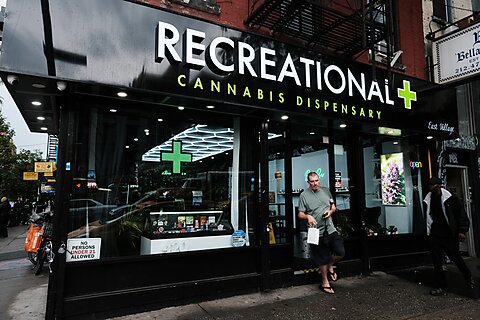The state of New York legalized recreational marijuana in 2021. Recent estimates, however, count 2,000 unlicensed vendors and only 100 licensed ones.
Why did legalization not eliminate the underground market?
One problem is that New York’s policy change did not eliminate the federal ban on marijuana, which has two important consequences. State‐legalized marijuana sellers cannot access the federally regulated banking system, and such sellers cannot deduct from revenue the costs of producing a federally illegal product. Thus, even without state prohibition, marijuana sellers face strong incentives to remain underground.
A second impediment is that New York has been slow at licensing legal marijuana retailers, with 30 people assigned to review about 7,000 applications. Additionally, a dispensary license in New York costs $7,000, plus $4,500 for a cannabis delivery license.
The third factor is the state’s 13 percent tax on retail sales, which again advantages black market sales.
To address this issue, Gov. Kathy Hochul announced an overhaul of New York’s legal cannabis program, granting authorities the power to speed up licensing and shut down local marijuana vendors. Faster licensing makes sense; shutting down underground vendors does not.
Instead, policy should allow the entire market to move above ground by reducing costly and time‐consuming regulation. These include requirements on environmental impact, store security, and record‐keeping, among others. By so doing, while expanding licensing and lowering the tax rate, the state can move most of the market above ground. This will plausibly raise tax revenue, by applying a lower rate to a much larger base.




